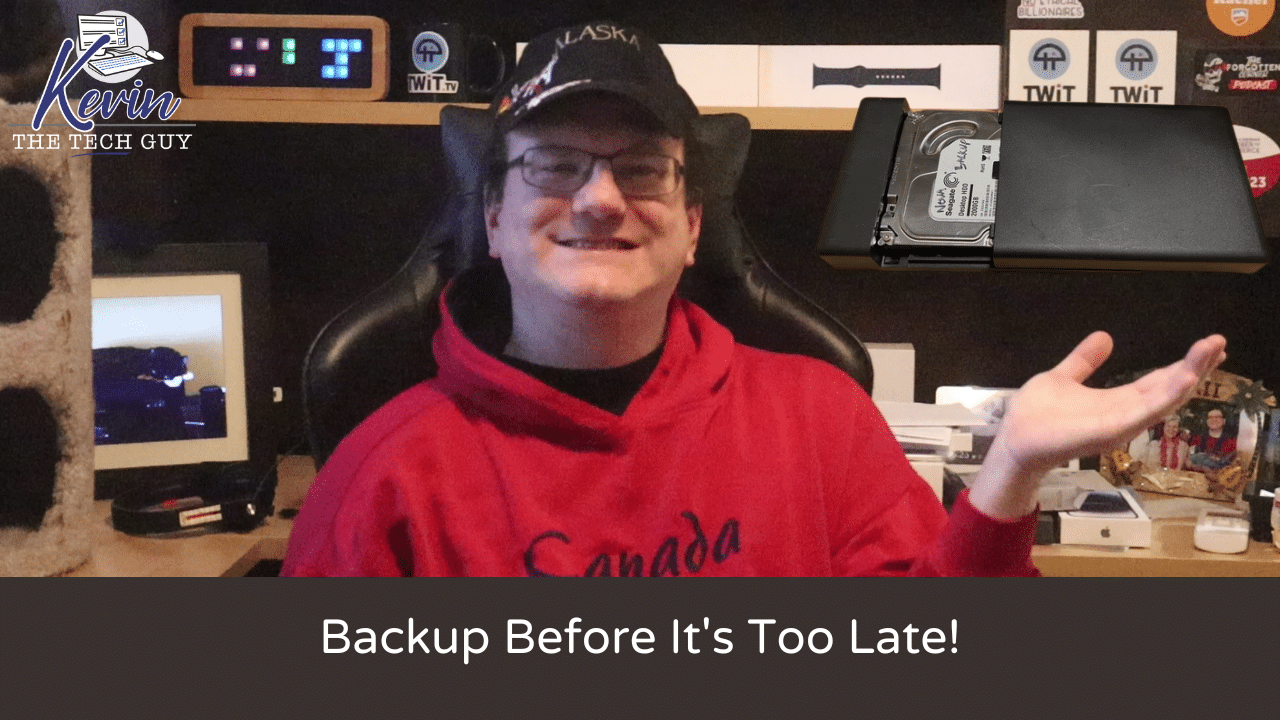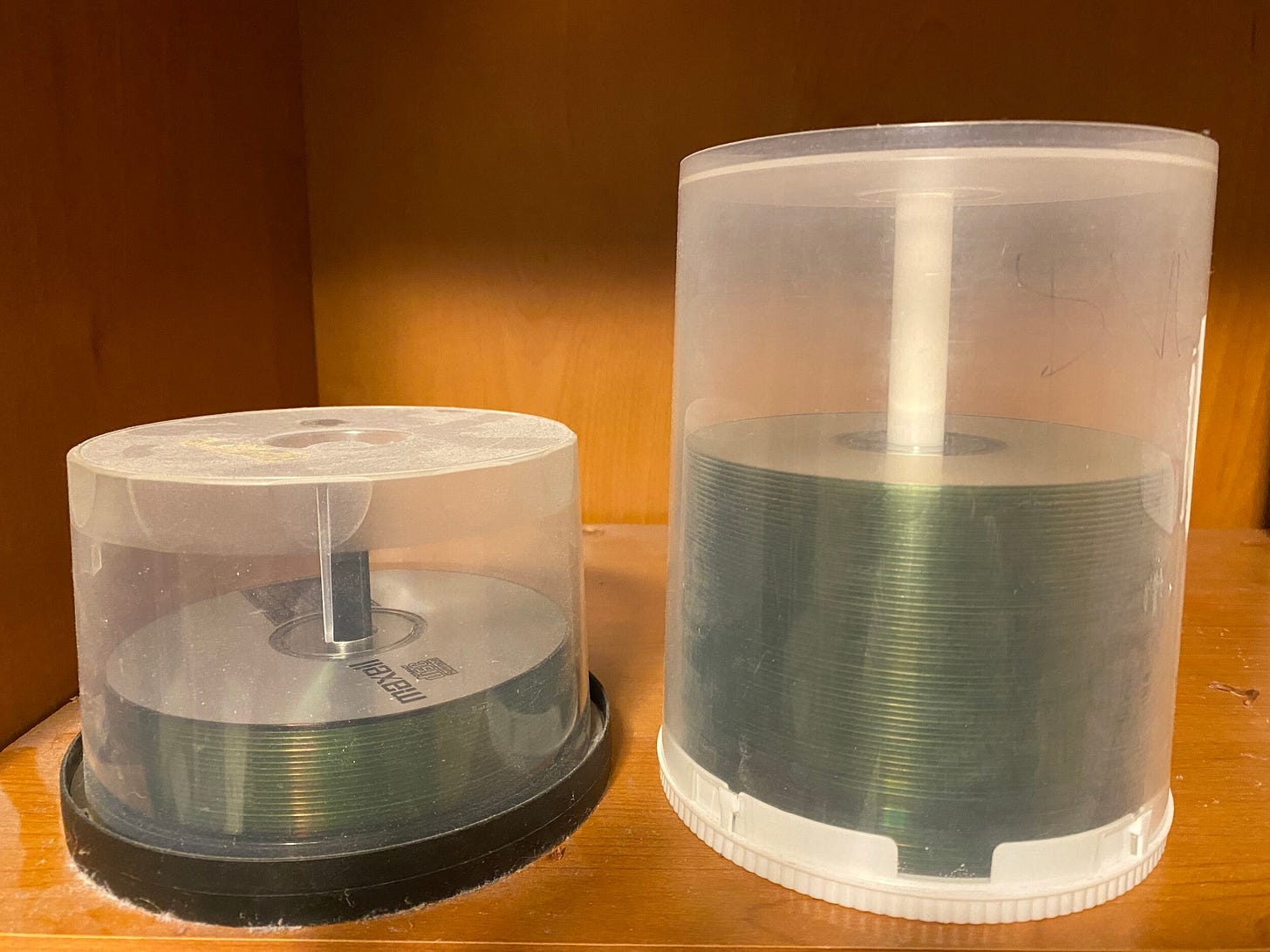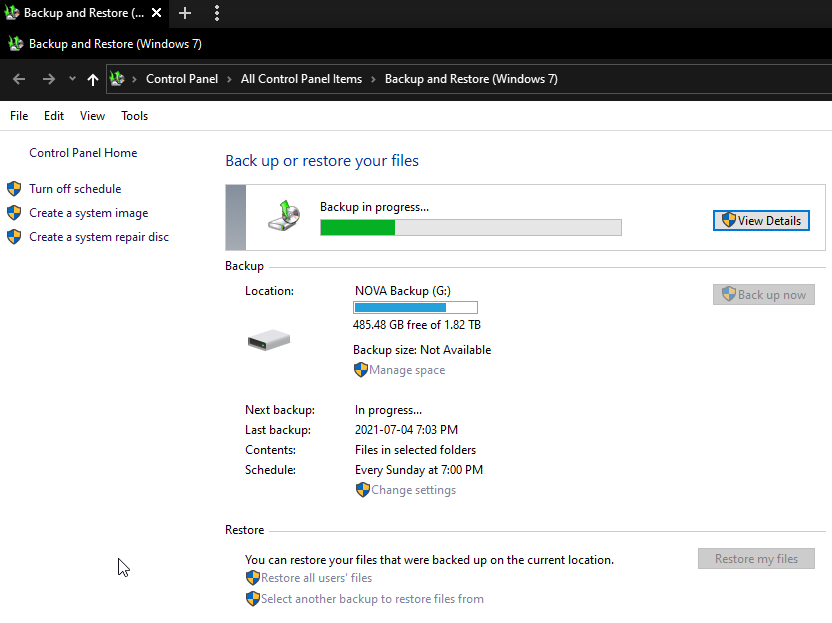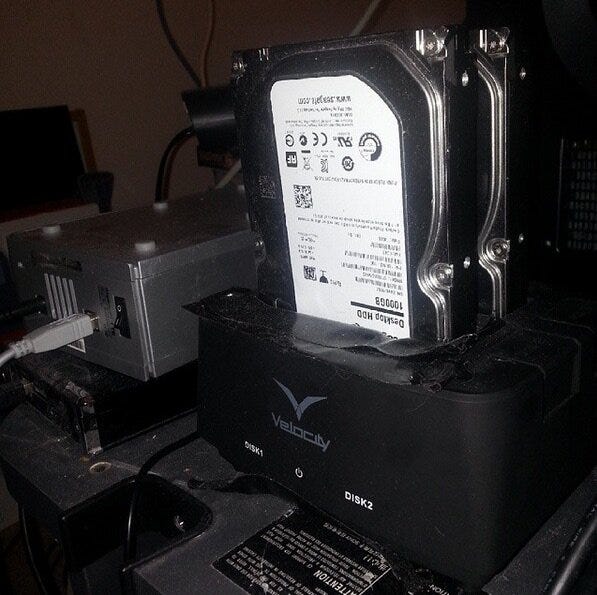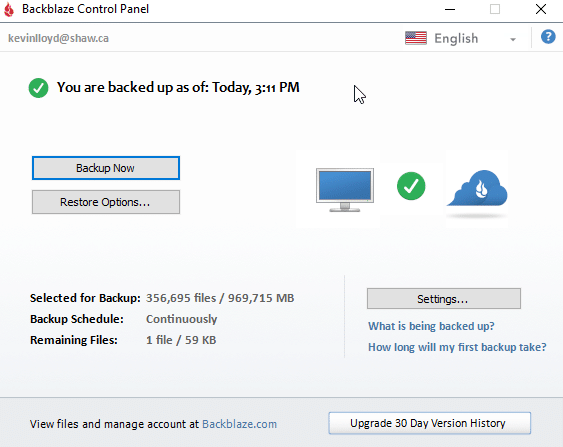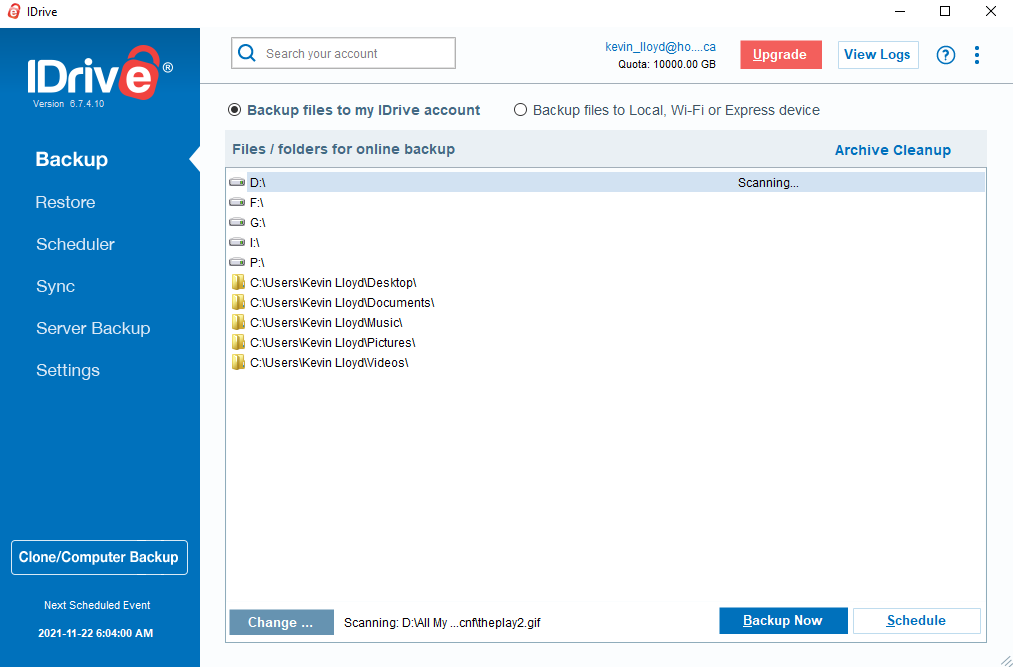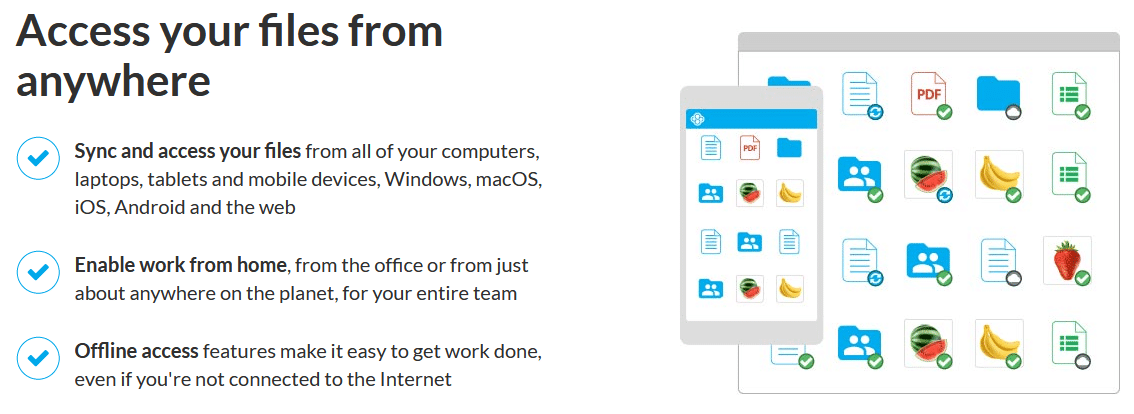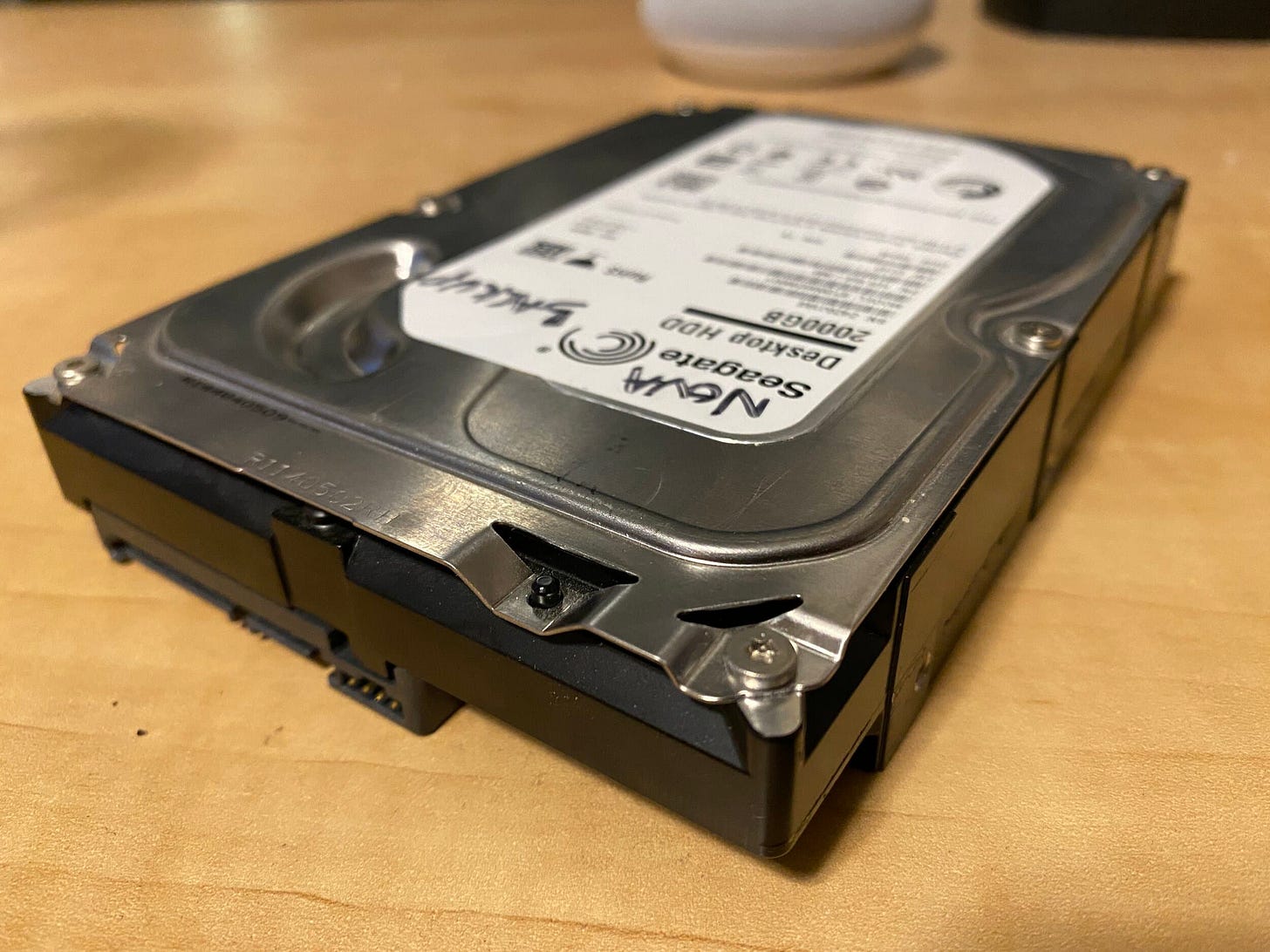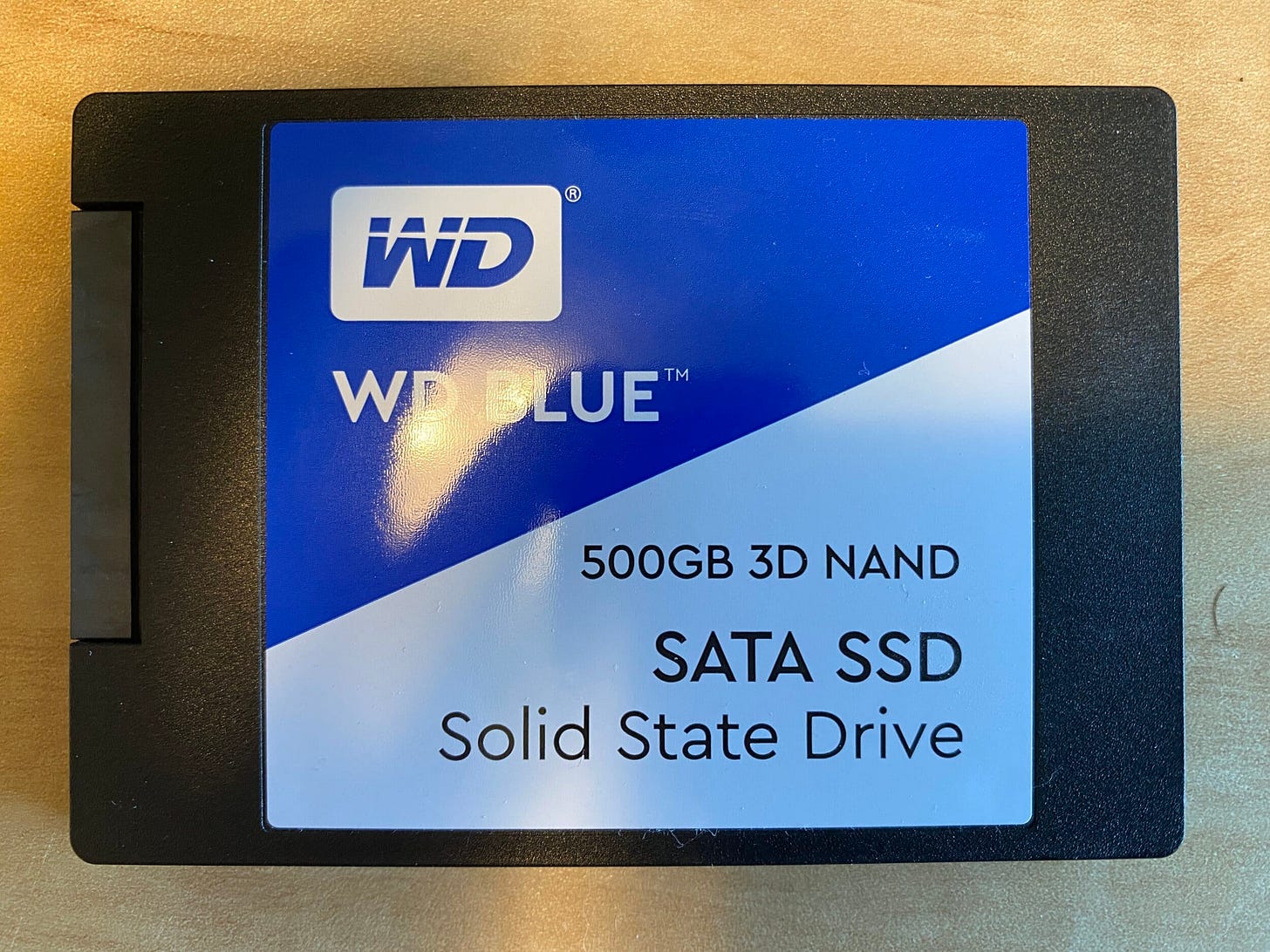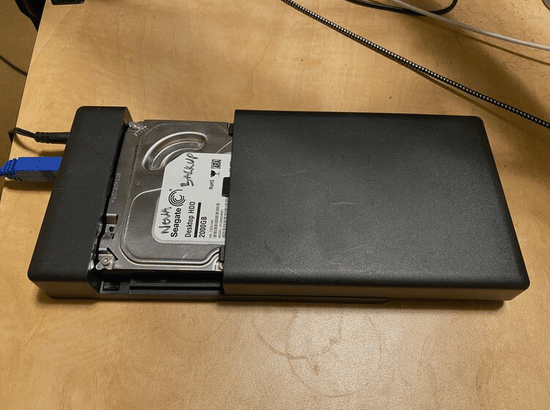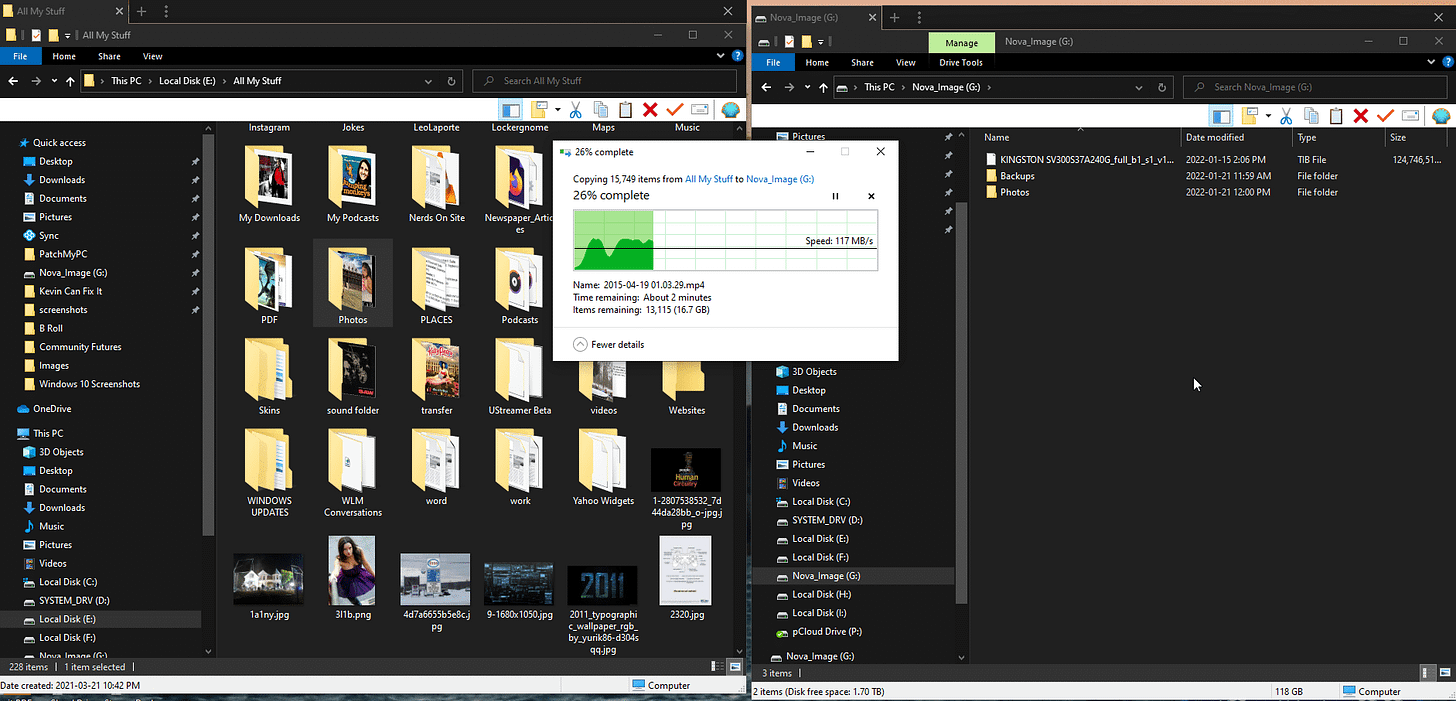What An Effective Data Backup Strategy Looks Like
Learn how to safeguard your files with simple, reliable backup solutions. From cloud storage to external drives, discover the tools and strategies that work best for you.
In this blog post, I will talk about the various ways to backup the files on your computer. I will talk about how I used to do it and modern methods, including what's built into Windows, external drives, cloud backup, how to do it manually, and how NOT to backup your files. Obviously, automatic backup is preferred; regardless, I hope you're inspired to take some time and set up your own data backup strategy!
It was NOT easy to do regular data backups during my early days of computing in the late '90s (yes, I’m dating myself there). Computers were slow, USB didn’t exist, nor did external hard drives, and certainly, off-site cloud backup wasn’t even an option. Which meant I didn’t put anything important on the computer. It was a toy.
BACKUP AND RESTORE
When CDs and DVDs happened, that made it easier, but very time consuming, held very little data, and they were not super reliable. It was possible, but a serious pain.
Then came along faster hard drives with more storage, external enclosures to put them in that connected via USB. That motivated me to create backups of my files. I could let it even let it run overnight.
You can of course simply copy and paste a copy of your files on to the external hard drive manually, and replace the files on the external drive every time you do a backup. Or, you can use the tool built into Windows 10 called Backup and Restore (Windows 7). That’s literally the name.
Tell it where to copy the files to, and simply click “run backup” on regular basis. You can then access and restore the files from within the Backup and Restore options, but you CANNOT view the files in Windows Explorer as you can any other drive.
Once you get in the routine of backing up your files, and do it as often as once a week, but certainly once a month to keep your files current in case disaster strikes! If you need to restore your files, these methods will help ensure you’re able to that relatively quickly! That’s important peace of mind given how much we use and rely on these devices now.
External Hard Drives and Docks
Nowadays, hard drives and solid state drives are much faster, have a great deal of storage space, and connect via super fast USB. In addition, internet is significantly faster, and in some cases, with no data caps.
You run the initial backup, which can take weeks as to not affect system performance, and after that only changes or new files are uploaded to the cloud service of your choice.
As an example, I have external hard drives, a couple of hard drive docks, and some external enclosures, though I have found enclosures to be more reliable.
Cloud and Off-Site Backup
I have tried a few cloud backup services over the years, and have been using Backblaze for a few years now. $7/mo and it just works in the background. Carbonite and iDrive are alternatives, but I prefer Backblaze. If you decide to use Backblaze, please use THIS SPECIAL LINK so we both get credit.
I often forget about it, and rarely need to access those copies of my files. It’s wonderful! In addition, I backup most files to Sync.com, and some files to Google Drive. I used Dropbox for years. If you decide to use any of these services, please ensure we both get credit or discounts by checking out my Windows Programs I Recommend page.
I have an Solid State Drive as my main drive, which is super fast. I also have a hard drive as well, which all of my personal files are on. You could also create a partition, or a section of your hard drive, Windows on one partition, and your data on the other.
Either way this is super useful for when you want to or need to “reset” or do a Fresh Install of Windows, without the worry of erasing the primary copy of your data in the process.
In terms of what is called “Off-Site”, which means outside of your home or home business, automatic backup is a fantastic way to ensure your files are backed up and that there is always a current backup of your data, and you don’t even have to think about it.
Backblaze is one option to backup to “the cloud”. As with all cloud backup options, it does an initial complete backup of your computer, and backs up any changes made or files added after that.
iDrive is another cloud backup option I recommend. They often have discounts happening, so this might be a more economical solution. It does the same thing as I described for Backblaze above, ensuring there your files are always backed up to your cloud iDrive account.
iDrive will also backup external hard drives and the like, whereas some other providers will only backup the hard drives or solid state drives inside your computer.
File sync services like Dropbox, SYNC, GOOGLE DRIVE, and PCLOUD are awesome for daily productivity, but also serve as an excellent way to backup some or all of your personal or business files to your other computers, and to your cloud accounts.
Hard and Solid State Drives
Traditional spinning hard drives have hundreds of moving parts, and are the single greatest point of failure in your computer, so it’s critical to keep current backups of the data you put on them. They can last 6 months, or even 10 years, depending on various factors.
They’re relatively inexpensive, and can store a lot of data. There are hard drives out there that can hold 10TB! As a result, nowadays many people use them as secondary drives to store personal or business files, and use a solid state drive (SSD) to improve performance and reliability of Windows and programs.
Solid State Drives (SSDs) have zero moving parts, and are therefore much more reliable and less prone to failure. They use flash memory similar to a USB thumb drive, but slightly different technology, and are more reliable.
They were introduced about a decade ago, and were quite expensive at the time, leading to many recommending them to be used as a primary drive for Windows and installed programs. User files can be stored on a traditional spinning drive if a lot of space is required.
That said, SSDs have increased in size and reduced in price, so when the option is there in terms of not needing a lot of storage space, it’s a great idea to only use SSDs.
External hard drives, or even hard drive enclosures, as seen in the image in this blog post, allow you to plug in a hard drive via USB into your computer and use the drive that way to access and move files around.
Proper external drives can make it difficult to open the case and access or replace the hard drive, so if you want that flexibility, it’s best to buy an enclosure instead and a separate hard drive or SSD to use that way.
USB Thumbdrives
One of the most important points that I have always told clients is to NEVER use a USB thumbdrive as a method of backing up your data. They can be finicky and unreliable, stop working suddenly, or Windows (Macs too) can suddenly decide not to communicate with them.
USB Sticks are fine for quickly transferring data or accessing it, but NEVER use them as a primary method of storage, or as a backup for ANY length of time. Always have a copy of the files on a computer, because inevitably the USB Stick will stop working.
Manual Backup of Files
Although you can use the Backup and Recovery Tool, as described above, you can ONLY access files you’ve backed up with that through that tool. Given the other ways I backup my files, I’m fine with that.
That said, if you prefer to access your backed up files like any other hard drive, the best way to do this is to copy and paste from one hard drive or folder to another. It’s certainly a manual process, but I prefer having control over that process.
If you prefer a more set-it-and-forget-it backup process, I recommend the FREE COBIAN BACKUP. Please remember to plugin your backup drivers if you set backups on a schedule, or obviously the backups won’t happen.
Backup Strategy
Some in the IT industry follow a strategy that I also follow. Ensure you have three copies of your data.
1. Your primary copy on the computer
2. A copy on an external hard drive (don’t use a USB thumbdrive, they’re too unreliable)
3. A copy in the cloud is by it’s nature off-site, and protected from any disaster happening in your home, like a fire or flood.
Thank you so much for reading and being a paid subscriber! Your support makes my work possible.


